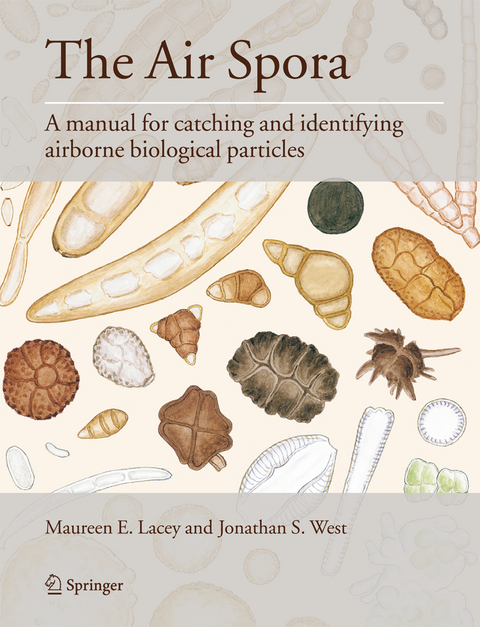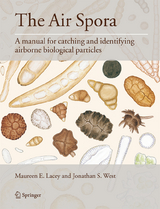The Air Spora
Springer-Verlag New York Inc.
978-0-387-30252-2 (ISBN)
"I recommend this book to those actively running or thinking of running a pollen and spore trapping program. It will also be of value to doctors, allergists, and those teaching the basics of palynology, wishing to include a lecture or two on air spora."
David M. Jarzen, Florida Museum of Natural History
In: The Newsletter of the American Association Of Stratigraphic Palynologists, 2007(40:2)
Chapter 1 Introduction to Aerobiology 1. What is aerobiology 2. The Air Spora 3. What is in the air 4. Early history of aerobiology 5. Aerobiology as a discipline 6. Aerobiology in action Chapter 2 The Aerobiology Pathway 1. Introduction 2. Take-off (Release) 3. Dispersal 4. Deposition - sedimentation and impaction 5. Impact 6. Interpreting spore trap data 7. Dispersal by rain splash and aerosol Chapter 3 Air Sampling Techniques 1. Introduction 2. Passive traps 3. Cascade impactor 4. Andersen sampler 5. Whirling arm trap 6. Burkard trap 7. Cyclone and minature cyclone samplers 8. Virtual impactors and liquid impingers 9. Filters Chapter 4 Using a Burkard Trap 1. Introduction 2. Siting the trap 3. Running the trap Chapter 5 Using a microscope 1. Introduction 2. Microscope structures 3. Using a microscope 4. Measuring and calibration Chapter 6 Pollen and spore counts 1. Introduction 2. Counting pollens and spores from a Burkard trap 3. Counting pollen and spores from a whirling arm trap Chapter 7 Identification 1. Introduction 2. Particle types 3. Useful references 4. Paintings –x1000 Appendix Glossary References Index Chapter 1 Introduction to Aerobiology 1. What is aerobiology 2. The Air Spora 3. What is in the air 4. Early history of aerobiology 5. Aerobiology as a discipline 6. Aerobiology in action Chapter 2 The Aerobiology Pathway 1. Introduction 2. Take-off (Release) 3. Dispersal 4. Deposition - sedimentation and impaction 5. Impact 6. Interpreting spore trap data 7. Dispersal by rain splash and aerosol Chapter 3 Air Sampling Techniques 1. Introduction 2. Passive traps 3. Cascade impactor 4. Andersen sampler 5. Whirling arm trap 6. Burkard trap 7. Cyclone and minaturecyclone samplers 8. Virtual impactors and liquid impingers 9. Filters Chapter 4 Using a Burkard Trap 1. Introduction 2. Siting the trap 3. Running the trap Chapter 5 Using a microscope 1. Introduction 2. Microscope structures 3. Using a microscope 4. Measuring and calibration Chapter 6 Pollen and spore counts 1. Introduction 2. Counting pollens and spores from a Burkard trap 3. Counting pollen and spores from a whirling arm trap Chapter 7 Identification 1. Introduction 2. Particle types 3. Useful references 4. Paint
| Erscheint lt. Verlag | 19.10.2006 |
|---|---|
| Zusatzinfo | XVI, 156 p. |
| Verlagsort | New York, NY |
| Sprache | englisch |
| Maße | 193 x 260 mm |
| Themenwelt | Studium ► Querschnittsbereiche ► Infektiologie / Immunologie |
| Naturwissenschaften ► Biologie ► Botanik | |
| Technik ► Umwelttechnik / Biotechnologie | |
| ISBN-10 | 0-387-30252-2 / 0387302522 |
| ISBN-13 | 978-0-387-30252-2 / 9780387302522 |
| Zustand | Neuware |
| Haben Sie eine Frage zum Produkt? |
aus dem Bereich




